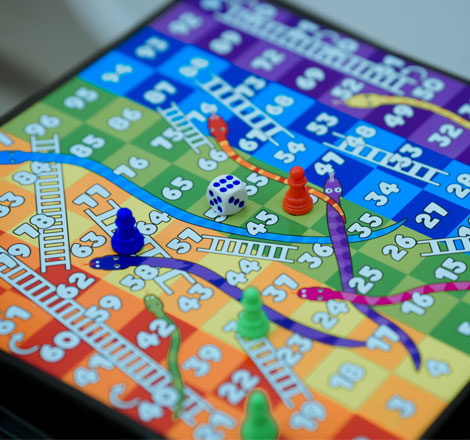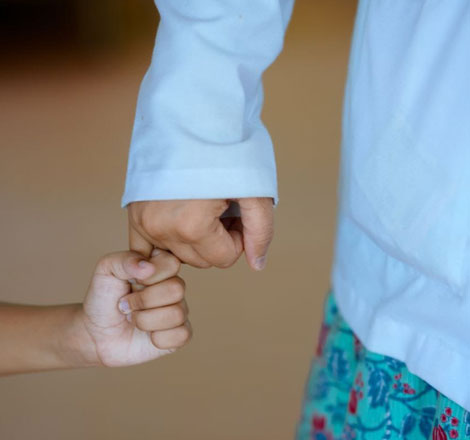Facilities
HOLISTIC DEVELOPMENT
3D APPROACH
- Step 1: Assess underlying causes of child's difficulties
- Step 2: We identify the best solutions for child's difficulties
- Step 3: We provide tailor-made solutions to suit child's needs
Occupational Therapy : This kind of treatment helps child learn life skills. The skills he learns are meant to help him live as independently as he can.
Sensory Integration Therapy : This therapy can help the child learn to deal with that kind of sensory information.
Speech therapy: helps to improve speech and communication skills.
SMART CLASSROOMS
Creating a smart classroom environment for children with autism can greatly improve their learning experience and help them achieve academic success. Here are some tips on how to create a smart classroom for children with autism:
Sensory-friendly environment: Children with autism may be sensitive to bright lights, loud sounds, and strong smells. Creating a sensory-friendly environment can help them feel more comfortable and focused in the classroom. Use soft lighting, quiet music, and natural scents like lavender or chamomile.
Visual aids: Many children with autism are visual learners. Providing visual aids like pictures, diagrams, and videos can help them understand concepts better. Use visual schedules to help them follow the daily routine, and label items in the classroom with pictures or words.
Positive reinforcement: Children with autism may respond well to positive reinforcement. Use a reward system to encourage good behaviour and academic progress. Praise them for their accomplishments and use positive language to build their confidence.
GROUP THERAPY
Group therapy can be an effective intervention for individuals with autism. Here are some benefits of group therapy for individuals with autism:
Social skills development: Group therapy can provide a structured environment for individuals with autism to develop and practice social skills with peers. Group therapy can help individuals learn how to initiate conversations, take turns, and develop friendships.
Generalization of skills: Group therapy can help individuals with autism generalize skills learned in therapy to real-life situations. As they practice social skills in a group, they can transfer these skills to social interactions in other settings such as school or community.
Exposure to different perspectives: Group therapy can expose individuals with autism to different perspectives and experiences of their peers, promoting empathy and understanding.
Support and encouragement: Group therapy can provide a supportive and encouraging environment for individuals with autism to express their feelings and experiences. Participants can offer each other emotional support, share experiences and learn from each other.
Reducing social isolation: Group therapy can help reduce social isolation for individuals with autism, by providing a supportive community where they can feel understood and accepted.
SOCIAL SKILLS TRAINING
Social skills training is an important intervention for individuals with autism. Here are some strategies for social skills training for individuals with autism:
Direct teaching of social skills: Social skills training involves direct teaching of social skills through modelling, role-playing, and reinforcement. Identify specific social skills that the individual needs to learn, such as initiating conversations, making eye contact, and interpreting nonverbal cues.
Visual aids: Many individuals with autism are visual learners. Using visual aids such as pictures, videos, and social stories can help them understand social situations and appropriate behaviours.
Practice in real-life situations: It is important to practice social skills in real-life situations. Provide opportunities for the individual to practice social skills with peers and adults in structured settings such as role-playing or in a natural setting such as in the classroom or community.
Parent and caregiver involvement: Parents and caregivers can play an important role in social skills training by reinforcing social skills at home and providing opportunities for socialization outside of therapy sessions.
Peer modelling: Peer modelling can be a powerful tool in social skills training. Pairing the individual with peers who demonstrate appropriate social behaviours can provide positive examples for the individual to learn from.
Generalization of skills: It is important to help the individual generalize social skills learned in therapy to other settings. Provide opportunities for the individual to practice social skills in various settings such as school, community, and home.
CO-CURRICULAR ACTIVITIES
Co-curricular activities can provide a fun and engaging way for individuals with autism to develop their skills and interests outside of the classroom.
Sports: Participating in sports can provide individuals with autism with opportunities to improve their physical coordination, social skills, and self-esteem. Sports such as swimming, basketball, and martial arts can be especially beneficial
Art: Art can be a great way for individuals with autism to express themselves creatively and develop their fine motor skills. Activities such as drawing, painting, and sculpting can help individuals with autism to improve their focus, attention to detail, and sensory processing.
Music: Music can be a powerful tool for individuals with autism, providing them with an outlet for self-expression and a way to develop social skills. Activities such as singing, playing an instrument, or participating in a choir can help individuals with autism to improve their communication, socialization, and emotional regulation.
OUTDOOR LEARNING CLASSESS
Outdoor learning classes can provide a stimulating and engaging learning environment for individuals with autism. Here are some benefits of outdoor learning classes for individuals with autism:
Sensory integration: The outdoors can provide a rich sensory environment for individuals with autism, helping to develop sensory integration and regulation skills.
Physical activity: Outdoor learning classes can provide opportunities for physical activity, which can improve motor skills, coordination, and overall health.
Environmental education: Outdoor learning classes can provide opportunities for individuals with autism to learn about the environment, such as plant and animal identification, and ecological concepts.
Social skills development: Outdoor learning classes can provide opportunities for social interaction with peers and adults, which can help to develop social skills such as communication, cooperation, and teamwork.
Stress reduction: Spending time outdoors can help to reduce stress and promote relaxation, which can be especially beneficial for individuals with autism who may experience heightened levels of anxiety.
PHYSICAL EXERCISES
Physical activities can provide numerous benefits for individuals with autism, including:
Improved motor skills: Physical activities such as swimming, yoga, and dance can help individuals with autism improve their motor skills, including coordination, balance, and agility.
Sensory regulation: Physical activities can provide sensory input that can help individuals with autism regulate their sensory systems. For example, swimming can provide proprioceptive input, which can help individuals with autism feel more grounded and connected to their bodies.
Improved physical fitness: Physical activities can improve overall physical fitness, including cardiovascular endurance, muscle strength, and flexibility.
Socialization: Physical activities such as team sports can provide opportunities for social interaction and support. For example, team sports can help individuals with autism develop social skills such as communication, cooperation, and teamwork
Improved self-esteem: Physical activities can help individuals with autism develop a sense of mastery and accomplishment, which can improve self-esteem and confidence.
Improved overall health: Physical activities can improve overall health and well-being, including reducing the risk of chronic diseases such as obesity, diabetes, and heart disease.
YOGA AND MUSIC THERAPY
Yoga and music therapy can provide numerous benefits for individuals with autism, including:
Improved sensory regulation: Both yoga and music therapy can provide sensory input that can help individuals with autism regulate their sensory systems. For example, yoga can provide proprioceptive input, which can help individuals with autism feel more grounded and connected to their bodies. Music therapy can provide auditory and rhythmic input that can help individuals with autism regulate their auditory and sensory systems.
Improved communication and social skills: Yoga and music therapy can provide opportunities for social interaction and support, which can help individuals with autism develop communication and social skills. For example, group music therapy sessions can provide opportunities for individuals with autism to interact with peers and participate in joint musical activities.
Improved motor skills and coordination: Yoga and music therapy can help individuals with autism improve their motor skills, including coordination, balance, and agility. For example, yoga poses and movement activities can help individuals with autism develop motor planning and coordination skills.
Reduced stress and anxiety: Both yoga and music therapy can promote relaxation and reduce stress and anxiety. For example, deep breathing exercises and relaxation techniques in yoga can help individuals with autism reduce stress and promote feelings of calm.
Improved self-awareness and self-regulation: Yoga and music therapy can help individuals with autism develop self-awareness and self-regulation skills. For example, practicing mindfulness in yoga can help individuals with autism develop an awareness of their own thoughts and emotions and learn strategies for self-regulation.










